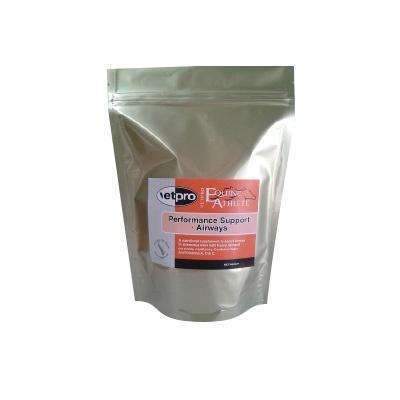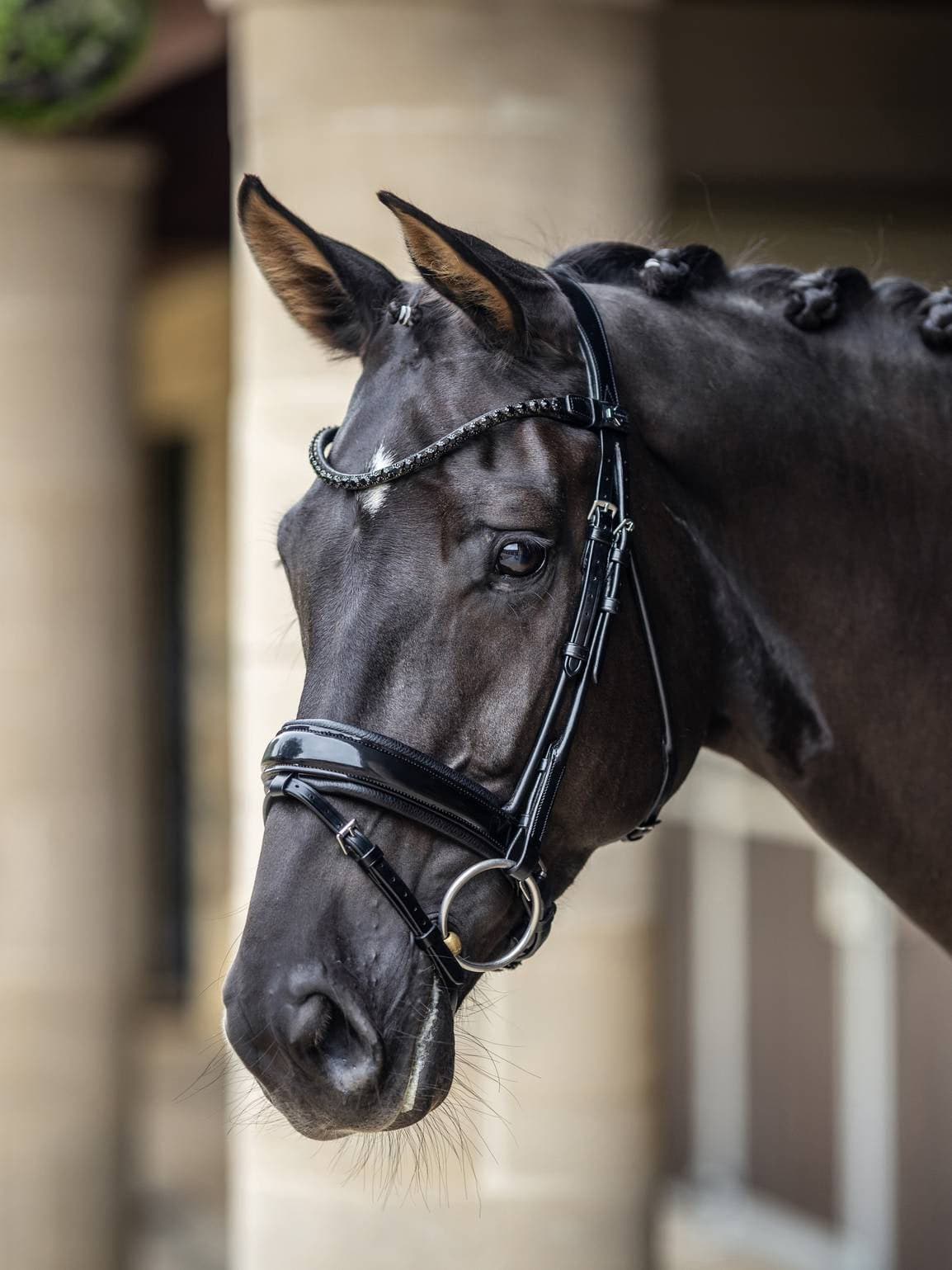
Vetpro Performance Support - Airways
Couldn't load pickup availability
Pickup currently unavailable at 2/84 Spartan Road
This is a nutriceutical supplement for horses that are involved in strenuous fast work, such as racing, eventing, hunting and active fast training where the horse may be asked for high speed sustained over a distance.
It is of particular assistance to horses who are in recovery from an airways virus and returning to training. It is important to note that one of the initiating factors of the problem – is the airway infection or virus that may not have been detected early enough and the horse may not have been given sufficient rest or support therapy doing this time. As a result the immune system is reduced in efficiency and the capillaries weakened. Ongoing correct management after such and episode is important, such as dampening all feeds and wash hay, reducing dust, especially in the barn cleaning and bed changing – remove the horse when this is occurring.
One of the key ingredients is called Rutin, this is natural substance derived from some plants and yields quercetin and rutinose
It is used in many countries in human therapeutics as a vasoprotectant, assisting the strengthening of small capillaries which have become fragile and broken down. Literally its the pressure of the strenuous exercise creating a high air demand through the lungs, that cause the capillaries to breakdown and leak. Horses that are roarers, even surgically adjusted, have a greater pressure build up and are therefore prone to this problem.
There is limited science in equine applications but strong anecdotal evidence is such that this ingredient, especially when enhanced with Vitamin C, can assist in the recovery of horses to full performance levels, but also as a preventative to reduce the negative effects of high speed or prolonged strenuous work. The pressure created in the lungs under stress, can cause the capillary walls to break down.
To be most effective it needs to be fed over a sustained period , ie all the time the horse is in work, and in conjunction with a more carefully prepared work schedule and a stable management regime to reduce any negative influences on the airways.
Nutritional supplementation should be started prior to the horse starting training, whether from a rest turn out, or illness.
Another factor in capillary weakness is a lowered immune system, so full levels of Vitamins A, D and C have been included in the product to assist an improvement with this vital aspect.
Vitamin A can be deficient in horses on restricted green pasture, but fed predominately grain and hay instead. This is often the case with racing horses.
Vitamin D is readily available to grazing animals exposed to daily sunlight, but again horses kept stabled or night grazed may have sub optimal levels which is negative to performance and the integral health of the horse.
Vitamin C is well known for its anti-oxidant properties, reducing the damaging free radicals developed in the transfer of cellular energy. However its inclusion in the formula is also to enhance the effects of Rutin and assist horses in recovery from stress and illness.
The product Rutin is a bioflavanoid and does not contravene racing regulations, neither does the level of Vitamins.
Active ingredients per kg:
Rutin Powder 20,000 mg
Vitamin A 833,350 iu
Vitamin C 16,667 mg
Vitamin D3 50,000 iu
Calcium 145 gm
Magnesium 113 gm
Dosage: Racehorses, Eventers: 60 gm (30gm twice daily)
Available Sizes: 1kg, 5kg
Suggestions for Standardbred Horses :
For a horse suspected of the problem a re-think of the training regime is also a part of the solution. It is important to have a warm up of 10 minutes before work and a warm down after, more so in a cold environment.
Swimming can stress the airway system, only swim as interval training for short bursts at a time with the same period rest to reduce the pressure until deep breathing is lowered, before another swim. It is the deep breathing that is important to avoid. Limit to two bursts of swimming.
It is thought that not only is the breakdown caused by the lung pressure but is amplified by the concussive effect from a hard track. So it is preferable to train using slow long distance work in the initial 6-8 weeks working towards fast work. Only use short hit out half pace 200 metres (furlong), using a softer surface if possible.
Only start full hit outs sprints for 200 metres (furlong), after a good warm up, then allow recovery before repeating, then the warm down. Avoid all out sustained work, it is important to reduce the time that full blood pressure is being created in the lungs and blood vessels. Studies have shown that as long as the early slow conditioning work is carried out to create musculoskeletal strength and fitness, then the use of short sprints with a recovery period between will have the horse in a better condition to race or perform. Save the full demand for that day and then allow recovery and go back to slow work immediately after. Observe the breathing of the horse closely in all training and racing and reduce the demand if it becomes stressed and allow recovery. It is the slow work and the recovery times, reducing the high demand work and feeding a support supplement that can help keep the performance of the horse up to a maximum.
Suggestions for Thoroughbred Horses & Eventers :
It is important to have a warm up of 10 minutes before work and a warm down after, more so in a cold environment.
Swimming can stress the airway system, only swim for short (60 sec) at a time with the same 60 second rest to reduce the pressure for 30 second s or until deep breathing is lowered, before another swim. It is the deep breathing that is important to avoid. Limit to two burst of swimming.
It is thought that not only is the breakdown caused by the lung pressure but is amplified by the concussive effect from a hard track. So it is preferable to train using slow long distance work in the initial 6-8 weeks working towards a fast canter, but not a gallop. Only use short hit out half pace 400-500 metres, using a softer surface if possible.
Only start full hit outs sprints for 300-400 metres , after a good warm up, then allow recovery before repeating, then the warm down. Avoid all out sustained work , it is important to reduce the time that full blood pressure is being created in the lungs and blood vessels. Studies have shown that as long as the early slow conditioning work is carried out to create musculoskeletal strength and fitness, then the use of short sprints with a recovery period between will have the horse in a better condition to race or perform. Save the full demand for that day and then allow recovery and go back to slow work immediately after. Observe the breathing of the horse closely in all training and racing and reduce the demand if it becomes stressed and allow recovery. It is the slow work and the recovery times, reducing the high demand work and feeding a support supplement that can help keep the performance of the horse up to a maximum.
If you have any questions, you are always welcome to contact us. We'll do our best to help.
-
Shipping Information
We send orders NZ wide daily every weekday.
-
Contact Us
You can email us or phone 092696518.
FAQs
Do you ship anywhere in NZ?
Yes, from Cape Reinga to Stewart Island and even the Chathams.
Do you have NZ Made brands in store?
Yes - you can shop Kiwi made equestrian goods here.
Is HorseSports 100% Kiwi owned & operated?
Absolutely.
What if I buy the wrong size?
Just return it to us un-used, in perfect condition and with the original tags on, and we'll send you the right one. See our return policy here.


